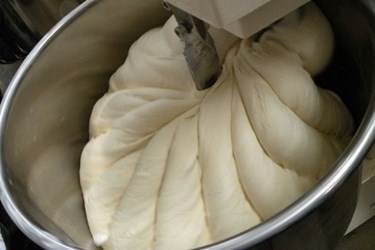3 Keys To Incorporating Micro Ingredients Into Product Mixing
By Isaac Fletcher, contributing writer, Food Online

Mixing minor and micro ingredients into batches can often be a challenge. If not properly incorporated into the carrier mix, the end product’s desired quality will likely fall short of expectations. However, by examining a few important factors, mixed food products will live up to high standards of quality.
Within many ingredient mixes, minor and micro ingredients are just as crucial an element as other, primary ingredients that make up the majority of the product. In order to ensure the end product is of high quality and consistency, it is important to guarantee that minor ingredients are uniformly and consistently mixed throughout the product. Additionally, uniform mixing ensures that each product created from the mix is comprised of the correct proportions of ingredients.
In general, minor and micro ingredients cost more per pound than other ingredients. Accordingly, uniformly mixing these ingredients can save money since there will be less need for additional ingredients to be added in an effort to make up for poor ingredient distribution throughout the batch.
Selecting The Right Mixer
While there are several mixer types with various operating principles available in the market, when it comes to ensuring micro ingredients are properly incorporated in the mix, a tumbling blender with a high-speed dispersion bar is a good choice. The tumbling action of the blender can turn the carrier mix into fluid, which exposes the particle surfaces to minor and micro ingredients. A high-speed dispersion bar will then disperse the micro ingredients throughout the batch in an effective and efficient manner.
Depending on the characteristics of ingredients, a ribbon blender or paddle blender can be used to incorporate minor and micro ingredients into the carrier mix. However, when used in some applications, paddles or ribbon blades can throw minor and micro ingredients against mixer walls — which may be moist, hot, or electrostatically charged — causing certain ingredients to stick and clump rather than disperse throughout the mix. Clumped ingredients are less likely to be uniformly mixed into the carrier.
Additionally, when choosing a mixer that will be used to incorporate a minor or micro ingredient that is liquid in form, special considerations need to be made. In order to properly incorporate a liquid ingredient into the carrier mix, the mix needs to be fluid and the liquid micro ingredient needs to be sprayed in tiny droplets to keep the mix dry and free-flowing.
Developing Mixing Specifications
By developing an exact mixing specification, mixing variability caused by multiple operators can be minimized. Within the specifications, the batch formula, the order in which each ingredient needs to be incorporated, and how quickly each ingredient is added should be included. In most instances, the minor and micro ingredients will need to be added after adding some of the carrier mix to avoid having micro ingredients stick to mixer walls.
Additionally, adding liquid ingredients too quickly can cause a mass in a single spot in the mix rather than dispersing them throughout. It is also important to consider mixer speed and operating and ingredient temperatures when establishing mixing specifications. Ingredients stored outdoors can vary widely in temperature from season to season, which creates different reactions in the batch. To counteract this effect, operators should stage ingredients by bringing them to room temperature before incorporating them into the mix. By using precise mix specifications, different operators are able to produce batches at the same level of quality.
Achieving Uniform Mixing
In order to achieve uniform mixing of minor and micro ingredients, creating a master batch should be considered. Within a master batch, the minor and micro ingredients are mixed in with a small amount of the carrier. The master batch is then added to the production batch for final mixing. When adding a micro ingredient to a large batch, the ingredient can easily end up stuck to the mixer walls rather than properly dispersed throughout the batch. This issue can be avoided by creating a master batch in which a proportionately larger amount of micro ingredient is mixed with the carrier which can then be mixed into the batch in a more uniform way.
